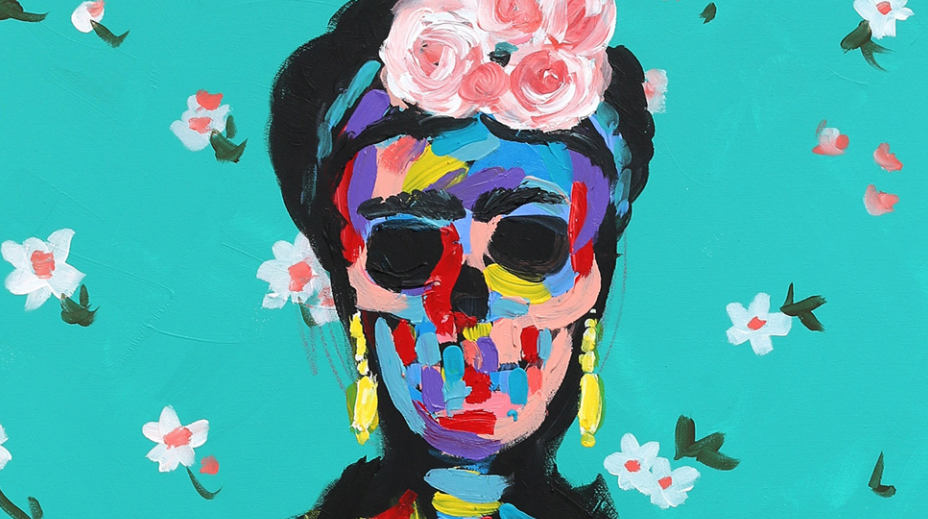
Bradley Theodore is a self-taught artist who paints historical figures with skulls for faces; he believes the skull is a symbol of universal humanity, because a skull sits buried within every breathing human being, free from the trivialities we use to discriminate against each other. A skull transcends gender, race, socioeconomic class, and the B you got on your last math test with the same languid ease – it unmistakably, unilaterally evokes death, other cultural connotations aside. In doing so, the skull unifies the audience viewing it. Theodore’s reduction of famous people’s faces to skulls says, over and over, HUMANS ARE MORE ALIKE THAN WE ARE DIFFERENT, and this underlying insistence gels especially well with Frida Kahlo’s image: she spent most of her career as a painter and fashion designer of Mexican heritage subverting Western conventions of dress code and gender, fracturing the arbitrary divisions between people that these social norms created.
This painting is an unabashed homage to Kahlo, whose favorite subjects for her own paintings were faces and things of nature – both of which are the principal focus of the artwork. The bright, festive coloring paired with the flowers, gold jewelry, and skull forcefully bring to mind el Dia de los Muertos, the Day of the Dead, one of the most prominent festivals celebrated in Mexican culture, which Kahlo was deeply immersed in. The painting could even be interpreted as an ofrenda for Kahlo herself.
The fact that the painting is titled Frida in Flowers is also telling – it depicts her in flowers and bursts of color, and the color takes over the skull that is her face, transforming it from a stark white symbol of death into an emblem of colorful, vibrant perseverance. This also tips a hat to Kahlo’s insistence on being defined by her art, and her likely abhorrence at the thought of being best known through her death and all the conspiracy theories surrounding it. It is fitting, I think, that this attitude – of celebrating someone who has passed away, rather than mourning them – is inextricable from the ethos of el Dia de los Muertos. It seems like something Kahlo would have endorsed.